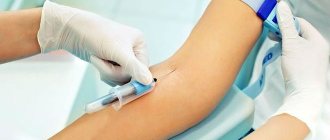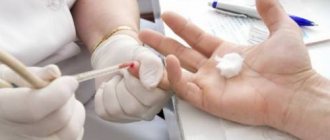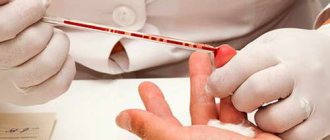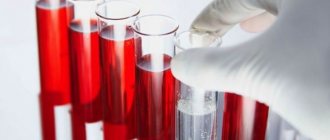- How does insulin work?
- Discovery of insulin and its role in the body
- Insulin secretion and its disorders
- Insulin for diabetics
- Preparations for insulin therapy
Insulin is a hormone that regulates blood glucose levels.
Glucose is a monosaccharide, that is, a simple carbohydrate. After eating, complex carbohydrates are broken down in the gastrointestinal tract into simple ones and absorbed into the bloodstream. Insulin regulates carbohydrate metabolism and takes part in protein and carbohydrate metabolism. Thanks to this hormone, glucose is absorbed from the blood by the cells of organs and tissues. Its remains are deposited in liver cells and muscles in the form of glycogen. It is a polysaccharide consisting of glucose molecules. This is an accumulated reserve of carbohydrates, which is the primary source of energy for our body. It is released and converted into glucose when the body experiences an increased need for energy. This occurs during physical activity, stress, when blood glucose levels decrease due to skipping meals, or a calorie deficit.
The participation of insulin in protein metabolism is that this hormone enhances the synthesis of nucleic acids and inhibits the breakdown of protein compounds. During fat metabolism, insulin activates energy processes in fat cells and participates in the synthesis of fatty acids.
How does insulin work?
It is this hormone that regulates the distribution of energy in the form of glucose. According to this criterion, all organs and tissues are divided into insulin-dependent and non-insulin-dependent. The liver, muscle and adipose tissue are insulin-dependent. Glucose enters them only when insulin “gives permission” to create energy depots. When there is a shortage of calories, when there is not enough energy, adipose tissue and muscles are left without glucose, which insulin does not allow into the cells. It is sent to the brain and other vital organs that are insulin-independent.
Release form
Insulin preparations go on sale in the form of solutions or suspensions, packaged in glass hermetically sealed bottles (5-10 ml). The top of the cork is rolled with an aluminum cap. For use in conjunction with a syringe pen, medicines are packaged in special cartridges (cases, cartridges).
For use in medical institutions, the drug can be in the form of a soluble white powder. It contains at least 3.1% sulfur. To introduce it into the body, it is diluted with special water for injection with the addition of hydrochloric acid, glycerin, and a solution of phenol (tricresol).
Discovery of insulin and its role in the body
The pancreas is responsible for the production of this hormone. The hormone is produced by special ß-cells of the islets of Langerhans. Insulin is a vital hormone, impaired secretion of which leads to serious metabolic problems. The most well-known disease that is associated with impaired insulin function of the pancreas is diabetes mellitus (DM).
The very first description of the symptoms of diabetes was made by the Egyptian Imhotep in 2980 BC. Information about diabetes was also found in ancient Greek papyri dating back to 1500 BC. Research into the nature of “sugar disease” has been conducted for many years. The discovery of the hormone that regulates blood glucose levels belongs to the scientist Paul Langerhans. In 1869, he discovered a group of cells in the pancreas that are responsible for the secretion of insulin. The specialist was able to prove that it is the pancreas that has the function of regulating blood sugar levels.
In 1900, scientist L.V. Sobolev continued research into this organ and discovered that pathological changes in the islets of Langerhans lead to diabetes mellitus, and if they persist, diabetes does not occur even in the case of atrophy of the glandular tissue.
The release of the hormone and the discovery of insulin therapy belongs to the Canadian doctor Frederick Banting. He was the first in the world to isolate the so-called “pancreatic extract” from its cells in order to use it in the treatment of diabetes. This happened only in 1921. Insulin was originally called ayletin, but then it was renamed.
Before the advent of insulin therapy, people with diabetes were doomed to die quickly. In 1922, a drug based on purified insulin of animal origin was obtained. In 1923, mass production of this medicine began. It allowed people with diabetes to artificially regulate blood glucose levels and thereby avoid the deadly complications of diabetes.
Currently, insulin for diabetics is obtained using genetic engineering. Such a drug is called recombinant. It is created from a substance that is produced by yeast strains placed in a nutrient medium. This method made it possible to abandon raw materials of animal origin and obtain a drug whose action is identical to natural insulin.
Diabetes
This is a terrible disease that became the so-called plague of the 20th century. And not only because of the large number of sick people, but also because of the reasons for its appearance and the decreasing age of patients. Now diabetes mellitus can occur not only in an elderly person, who is, in principle, prone to this disease due to the deterioration of the functioning of all his organs, but also in young children. Scientists around the world are trying to find the answer to this difficult question. After all, it turns out that a child with diabetes must maintain normal insulin levels throughout his entire life. It is not difficult to identify this disease; an experienced doctor should prescribe several simple tests. First, blood is tested for sugar and it is determined whether it is elevated. If the result is positive, they proceed as follows: they conduct a glucose tolerance test and make an appropriate diagnosis. When diabetes is confirmed, the doctor needs to understand how much of the hormone being studied is specifically lacking in your body. To do this, you should take an insulin test. Here you need to understand that there are only two types of diabetes:
- 1st: insulin is reduced, while blood glucose is correspondingly increased. As a result, urination increases and sugar is found in the urine;
- 2nd: an increase in insulin is observed. Why is this happening? There is also glucose in the blood, insulin is produced, but the body’s sensitivity to it decreases, i.e., it doesn’t seem to see it. In this case, it makes sense to prescribe special studies, such as a blood test for immunoreactive insulin.
Since insulin is a hormone of the pancreas, it would be logical to believe that in the case of diabetes mellitus, the doctor will also prescribe medications for the normal functioning of this organ. But the body will also need insulin coming from outside. Therefore, you need to purchase the necessary medications. By the way, when the diagnosis is made and you need to independently measure the level of glucose in your blood at home every day, it would be advisable to purchase a device known to everyone - a glucometer. It allows you to easily find out the required value in a few seconds. Using disposable needles, you make a small puncture on your finger and collect the blood with a test strip. You insert it into the glucometer and the result is ready. Usually it turns out to be reliable.
Insulin secretion and its disorders
For the normal course of metabolic processes, it is important that insulin is produced in the required volume. A minimal amount of this hormone is always produced. We are talking about basal insulin secretion. After eating and glucose entering the blood, an active release of the hormone occurs - the so-called prandial peak. This is necessary so that glucose can enter the cells of organs and tissues.
During normal functioning of the pancreas, insulin production after eating occurs in two phases. The fast phase lasts 1-3 minutes, the slow phase lasts up to half an hour.
Insulin levels in the blood of healthy people fluctuate over a wide range. It depends on age and physiological state. In children, this value ranges from 3 to 20 μU/ml; in adults, the upper threshold reaches 25 μU/ml.
Women experience significant hormonal changes during pregnancy and after menopause. Normal insulin levels in this case range from 6 to 27/36 µU/ml.
A violation is considered not only a decreased secretion of the hormone, but also an increased one. There are several factors due to which the pancreas cannot produce insulin in the required amount:
- Type 1 diabetes. The pathological process is caused by an autoimmune reaction. In people with this disease, the ß-cells of the islets of Langerhans are destroyed and cannot meet the body's need for the hormone.
- Pancreatitis. Inflammation of the pancreas leads to impaired secretory function and lack of insulin due to tissue fibrosis. Diabetes mellitus that develops with pancreatitis is called pancreatogenic or type 3 diabetes.
- Trauma, surgery on the pancreas. They cause damage to the islet apparatus, which produces insulin.
- Abuse of fast carbohydrates. Excessive intake of glucose from food causes the organ to work harder. Over time, this leads to impaired insulin function due to wear and tear on the pancreas.
- Intoxication. Alcohol, strong medications, chemical and natural poisons, and radioactive substances damage pancreatic cells.
- Insulinoma. Tumor of β-cells of the pancreatic islets leads to excessive secretion of insulin.
Elevated levels of the hormone are dangerous due to constant hypoglycemia. Cells of organs and tissues cannot receive enough energy due to low glucose levels. A hypoglycemic attack, in which the blood glucose level drops below 2.5 mmol/l, leads to loss of consciousness, local damage to the nervous system, and can cause myocardial infarction. In severe cases, the patient experiences a hypoglycemic coma - a fatal condition.
Injection technique
Insulin can be administered independently, without assistance. To do this, you can use an insulin syringe or a special syringe pen. The latter method is more preferable, since it allows you to more accurately measure the required amount of substance. Another advantage is that the injection can be given directly through clothing, which is especially convenient for patients with diabetes who lead an active lifestyle: studying at a university, working in offices.
It is imperative to comply with all antiseptic requirements: wash your hands with soap, use only disposable syringes, treat the injection site with alcohol or alcohol-based antiseptic wipes. It should be remembered that alcohol destroys insulin, therefore, after treating the injection site, you must wait until the alcohol-containing liquid used for disinfection has completely dried, and only then inject. Do not inject the drug into the same place multiple times. Each time you need to retreat from the previous puncture by 2-3 centimeters. Changing the area of drug administration is done to prevent lipodystrophy.
Another method of administering insulin is called an insulin pump, which provides a continuous supply of the hormone. The system is a kind of syringe dispenser, consisting of the pump itself, a small computer designed to calculate the dose and control the drug administration regimen, a reservoir with the drug and a thin needle (cannula) for administering the drug.
This method of treatment is becoming increasingly widespread, since it allows one to take into account the amount of residual insulin in the blood and the amount of food entering the body. For administration using an insulin pump, ultra-short and short-acting drugs are used, but the number of skin punctures is minimized.
When using an insulin pump (doser), patients with diabetes have a more stable course of the disease, the quality of life increases, and the likelihood of complications decreases. At the same time, skeptics also note the negative aspects of using this method. First of all, this is an inconvenience, especially for those who want to lead an active lifestyle. In addition, a patient with diabetes is completely dependent on technology, because the process is completely automated. A malfunction of the program, failure of the device, or sudden loss of battery charge can lead to ketoacidosis. Another negative factor that is significant for many Russians is the high cost of the device.
Insulin for diabetics
When insulin production is disrupted or absent, glucose from food enters the blood, but cannot enter the cells of insulin-dependent tissues, that is, muscles and fat. At the same time, insulin-independent organs receive glucose in excess, which leads to pathological changes. In diabetes mellitus, the target organs are primarily affected: blood vessels, nerves, kidneys.
Insulin therapy is used in the treatment of type 1 and type 2 diabetes. In type 1 diabetes, pancreatic cells are damaged, so injections of the drug become the only way to control glucose levels. In type 2 diabetes, disorders occur due to a decrease in the susceptibility of insulin-sensitive tissues. It can be produced in sufficient quantities or even in excess, but the liver, fat and muscle tissue cease to perceive the effect of this hormone. Chronic hyperglycemia occurs - increased levels of glucose in the blood.
A fundamental role in the treatment of type 2 diabetes is played by a low-carbohydrate diet, taking medications to lower sugar levels and increase cell sensitivity to insulin. Insulin injections for type 2 diabetes are prescribed to patients with progressive disease. As a rule, this occurs when the beta cells of the pancreas cannot cope with the production of endogenous hormone, and sugar-lowering drugs cease to have an effect.
Diabetes becomes decompensated, that is, uncontrolled, which is fraught with serious complications. In this case, exogenous insulin comes to the rescue - the one that comes from the outside.
Increased insulin - what does it mean?
Of course, an increase in this indicator will not always lead to diabetes mellitus.
One of the most common consequences can be obesity, and only then the disease of high blood sugar. Often, doctors and nutritionists, in order to explain to their patients the simple mechanism of excess weight formation, begin their story by answering a simple question: “Insulin is a hormone of which gland?” After all, people who eat large amounts of carbohydrate foods (for example, flour and sweet dishes) do not think about the load their pancreas experiences. Of course, you can eat these foods, but in moderate portions, then the whole system works organically. In general, with this diet, the following happens: insulin increases constantly (i.e., this process takes on a chronic form), but sugar enters the body in unlimited quantities, and as a result, it is simply stored in fat. And remember that in this case the appetite is greatly increased. A vicious circle, from which it will be very difficult for you to get out, is ensured: you eat a lot of unhealthy food and densely - insulin is increased - fat is deposited - appetite increases - again we eat in unlimited quantities. It is best to contact specialists in a timely manner who will prescribe appropriate diets and all the necessary tests.
Preparations for insulin therapy
In the treatment of diabetes, different types of insulin preparations are used. They have the same effect, but they differ in speed and duration of impact. This is necessary to make the treatment more physiological, because in healthy people, insulin levels naturally rise and fall throughout the day.
For diabetes, four types of insulin are used:
- The fast-acting drug is administered before eating. It will take effect in 15 minutes and retains its effect for 3-4 hours.
- Short-acting insulin is also used before meals. It will work in 30-60 minutes. The effect lasts for 5-8 hours.
- Intermediate insulin works 1-2 hours after the injection. The effect lasts for 14-16 hours.
- Long-acting insulin works two hours after the injection. Its effect lasts up to a day or more.
The treatment regimen and dosage of the drug are selected by the attending physician based on the clinical case. For type 1 diabetes, basal-bolus insulin therapy is usually used. It includes short- and fast-acting drugs to use up sugar from each meal and maintain normal glucose levels throughout the day.
Drug concentration is also important
Insulins come in different concentrations: 40IU/ml - 40 units of insulin in 1 ml of solution; 100IU/ml - 100 units of insulin in 1 ml of solution; 300IU/ml - 300 units of insulin in 1 ml of solution. What does it mean? Let's say you need to inject 10 units of insulin. If you are using 40 IU/ml insulin, then a drop containing 10 units of the active substance will be much larger than that of insulin with a concentration of 300 IU/ml. Smaller drop means less risk of lipohypertrophy. Let us repeat: drugs cannot be tolerated when they are used thoughtlessly.
Proper use of insulin will allow you to lead an active, fulfilling life. With care, Your DiaMarka!
Preparing for analysis
Reliable research values are achieved by following the list of recommendations:
- A prerequisite for taking blood is to donate blood on an empty stomach. The duration of fasting should be at least 8-14 hours. Drinking water without gas is allowed.
- Avoid drinking alcohol and smoking before taking blood.
- Complex sets of physical exercises and strenuous training should be excluded.
- Taking medications in preparation for diagnostic procedures should be agreed with the attending physician. Provided that they cannot be canceled, you need to warn the biochemical laboratory specialists about this.
- It is not recommended to carry out blood sampling procedures immediately after physiotherapeutic procedures, ultrasound, radiographic and other examinations.
- You should not combine a prostate biopsy and sigmoidoscopy on the same day with an insulin test.
Tests can be taken at municipal medical institutions or commercial clinics. The latter option is more often considered when the patient does not have free time or in emergency cases. The price for the study depends on the region and varies from 680 rubles and above. It should be noted that this amount does not include blood sampling, the cost of which is 199 rubles.








